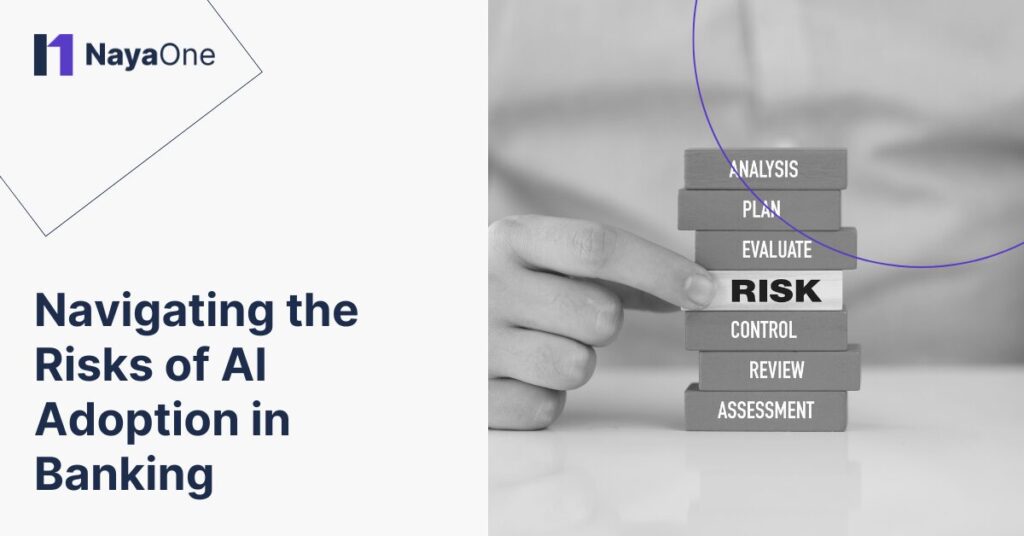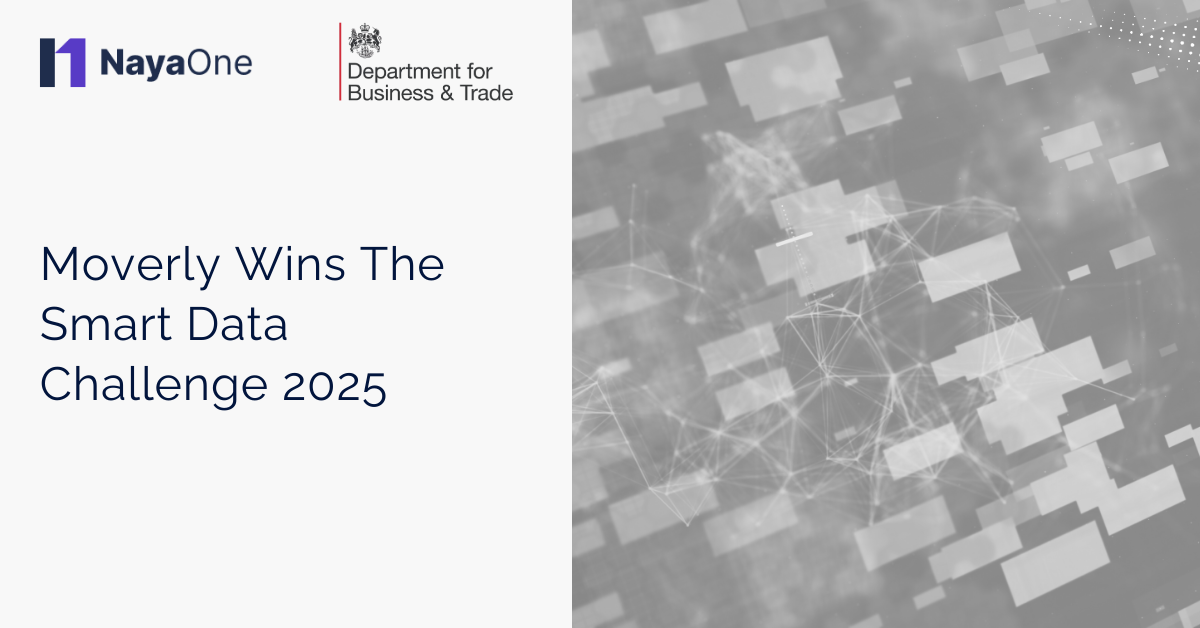
Oli Platt
Head of Client Solutions
Due to artificial intelligence (AI), the financial services industry will no longer be the same. From predictive analytics to automated decision-making, AI technologies have the potential to transform every aspect of banking and investment management. However, alongside the benefits come significant risks of AI in banking and financial services. Drawing on insights from industry experts and thought leaders, we’ll examine the potential opportunities and risks associated with AI adoption in banking. We’ll also provide actionable strategies and best practices for mitigating risks and maximising the benefits of AI in banking.
Understanding the Risks of AI Adoption in Banking
AI adoption in financial services presents a myriad of potential risks that banking organisations must carefully navigate to ensure responsible and effective implementation. Understanding these risks is crucial for decision-makers and stakeholders in the financial sector. Here are some key areas to consider:
Data Privacy and Security
AI systems heavily rely on vast amounts of data to make informed decisions and predictions. However, this reliance raises significant concerns about data privacy and security. Mishandling of sensitive customer information or data breaches could have severe consequences, including legal repercussions, financial losses, and reputational damage. Financial institutions must prioritise robust data protection measures and ensure compliance with relevant regulations, such as GDPR (General Data Protection Regulation).
Over-reliance on Automation
While AI offers unparalleled capabilities in automating tasks and processes, there is a risk of over-reliance on automation. AI is not foolproof. Therefore, blindly trusting AI-driven decisions without human oversight can result in suboptimal outcomes, missed opportunities, or even critical mistakes. Financial organisations must strike a balance between automation and human intervention. They must leverage AI as a tool to automate manual processes and augment human talent and decision-making rather than replacing it entirely.
Job Displacement
The widespread adoption of AI technologies has raised concerns about job displacement, particularly in roles that involve repetitive and routine tasks. Automation of manual processes may lead to workforce restructuring and job losses in certain sectors. Banks and financial institutions must proactively address these concerns by investing in reskilling and upskilling initiatives for employees. Fostering a culture of continuous learning and adaptation can help banks reap the best of both worlds – human talent and artificial intelligence.
Bias and Discrimination
AI algorithms are susceptible to bias, often reflecting the biases present in the data used for training. This inherent bias can result in discriminatory outcomes, exacerbating inequalities and leading to compliance issues. Financial organisations must be vigilant in identifying and mitigating bias in AI systems and implement fairness-aware algorithms. The use of synthetic data in LLM training can also help ensure diversity and inclusivity in model development processes.
Technical Failures
Like any technology, AI systems are vulnerable to technical failures and cyberattacks. Malfunctions in AI algorithms or security breaches can have serious consequences, ranging from financial losses to regulatory sanctions. Financial institutions must implement robust cybersecurity measures. Banking organisations must also have contingency plans in place to mitigate AI risks and safeguard against malicious attacks.
Mitigating the Risks
Mitigating the risks associated with AI adoption in banking requires a comprehensive approach. It needs to encompass proactive measures, robust governance frameworks, and ongoing monitoring and evaluation. Here are some strategies for financial institutions to effectively mitigate the risks of AI implementation:
Robust AI Governance and Oversight
Establishing clear AI governance structures and oversight mechanisms is essential to effectively manage risks of AI in banking. Financial institutions should designate responsible individuals or committees accountable for overseeing AI initiatives, defining risk appetite, and ensuring compliance with regulatory requirements. Audits and assessments of AI systems’ performance and adherence to ethical standards should be regular. They can help identify and proactively address potential issues.
Ethical AI Principles
Adhering to ethical AI principles is paramount in mitigating the risks of bias, discrimination, and unintended consequences. Financial organisations should integrate ethical considerations into the design, development, and deployment of AI systems. This will ensure transparency, fairness, accountability, and inclusivity throughout the AI lifecycle. This is especially important while there are no worldwide AI regulations. While the EU AI Act is the first official legislation to regulate AI, most of the world is not et subject to any AI laws.
Data Governance and Quality Assurance
Effective data governance and quality assurance processes can also help mitigate data-related risks in AI adoption. Financial institutions must ensure the integrity, accuracy, and reliability of data used to train AI models. They must implement data validation, cleansing, and anonymisation techniques where necessary.
Human-AI Collaboration
Promoting collaboration between humans and AI systems is essential for mitigating the risks of over-reliance on automation and ensuring the complementarity of human judgment with AI-driven insights. Financial organisations should empower employees with the necessary skills and training to effectively interact with AI technologies. This can foster a culture of human-AI collaboration and shared responsibility for decision-making processes. Human oversight and intervention should be integrated into AI systems to validate results, challenge assumptions, and ensure alignment with organisational goals and values.
Continuous Monitoring and Evaluation
Continuous monitoring and evaluation of AI systems’ performance and impact are essential for identifying new risks of AI in banking and refining mitigation strategies over time. Financial institutions should implement monitoring mechanisms to track AI models’ behaviour, detect anomalies or biases, and assess their compliance with regulatory requirements and ethical standards. Banks should conduct regular audits and reviews should to evaluate AI systems’ effectiveness, address any issues or gaps, and incorporate lessons learned into future AI initiatives. By adopting these proactive measures and integrating risk mitigation strategies into their AI governance frameworks, financial institutions can effectively navigate the complexities of AI adoption while safeguarding against potential risks and ensuring responsible and sustainable deployment of AI technologies.
Embracing Responsible AI Adoption with NayaOne’s AI Sandbox
As financial institutions navigate the complex landscape of AI adoption, it’s crucial to strike a balance between innovation and risk management. AI presents unparalleled opportunities for streamlining operations, enhancing customer experiences, and driving business growth. However, it also poses significant risks that require diligence and foresight. A powerful tool that financial institutions can leverage in their journey towards responsible AI adoption is the AI Sandbox. The AI Sandbox provides a safe and controlled environment for testing and validating AI models, allowing institutions to assess risks, refine algorithms, and ensure compliance with regulatory requirements before deploying AI solutions in production environments. By harnessing the capabilities of the AI Sandbox, financial institutions can mitigate risks associated with AI adoption. These include data privacy breaches, algorithmic bias, and model performance issues. Moreover, the AI Sandbox fosters collaboration between risk managers, data scientists, and compliance professionals. It enables cross-functional teams to work together towards developing AI solutions that are not only innovative but also ethical and compliant.





